景德镇陶瓷工业遗产博物馆,景德镇,江西,中国
北京华清安地建筑设计有限公司,北京清华同衡规划设计研究院有限公司,北京中元工程设计顾问有限公司

1 公共空间草图Sketch of public space
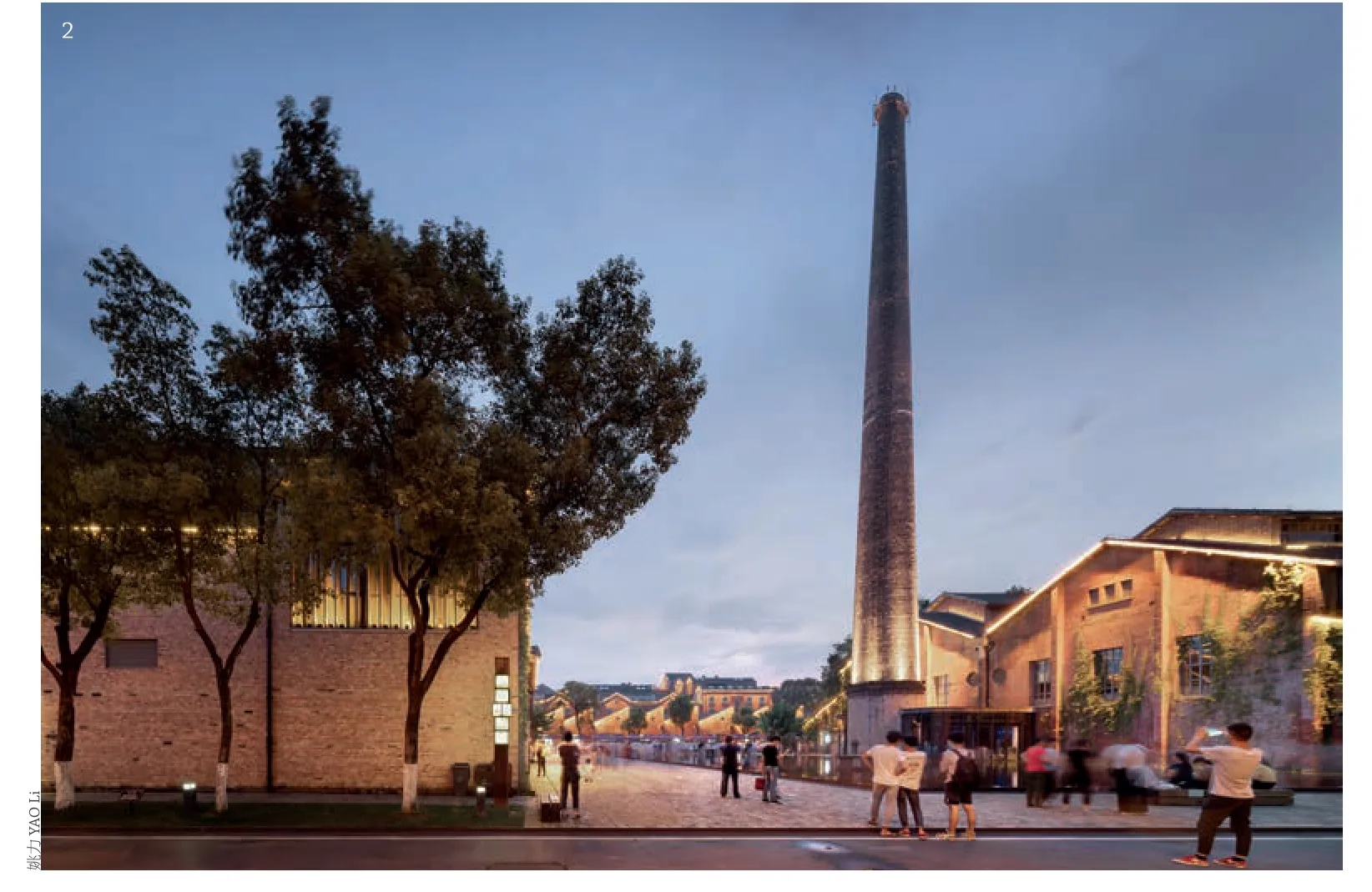
2 水景广场Water view plaza
业主:景德镇陶文旅控股集团有限公司
业主负责人:刘子力
主创建筑师:张杰,胡建新,刘岩,李婷
设计团队:张冰冰,张洁,叶江山,王智,刘俊宇,贺鼎,蒋炳丽,王力,宋肖肖,何琳,吴晓燕
建筑面积:9497m2
设计时间:2012-2013
竣工时间:2016.10
摄影:姚力,曹百强,周之毅,UCN
Client: Jingdezhen Ceramic Culture Tourism Group
Leader of the Client: LIU Zili
Principal Architects: ZHANG Jie,HU Jianxin,LIU Yan,LI Ting
Project Team: ZHANG Bingbing,ZHANG Jie,YE Jiangshan,WANG Zhi,LIU Junyu,HE Ding,JIANG Bingli,WANG Li,SONG Xiaoxiao,HE Lin,WU Xiaoyan
Floor Area: 9497 m2
Design Period: 2012-2013
Completion Time: 2016.10
Photos: YAO Li,CAO Baiqiang,
ZHOU Zhiyi,UCN
景德镇陶溪川国际陶瓷文化产业园示范区实施规划设计始于2012 年,包含保留工业建筑及部分新建建筑。其中,博物馆由原建于1950 年代的重要厂房改造而成。
本项目唤起了城市记忆,为海内外“景漂”提供了就业、生活的特色空间,使众多瓷工重返瓷厂,延续了陶瓷文化产业,带动了景德镇旅游、服务行业的发展,使景德镇重新成为国际艺术焦点;同时也为景德镇市民提供了重要的文化与休闲场所,提升了市民的自豪感,解决了由于工厂关闭带来的社会环境等问题,为景德镇城市整体提质升级做出了重要贡献。
(1)遵循“最小干预”原则,保持真实性,谨慎修复、适度创新,低碳环保。最大限度保留再利用老厂房中的外墙材料、内部构架,减少建筑垃圾,并聘请参与当年厂房建设的老工人,采用原工艺进行修复和建设。项目保留不同时期的生产设备,将圆窑、长窑、货车轨道等原工艺流程上的各类典型设备和要素作为室内空间和展陈流线的组织者。
(2)低影响的新结构和节能的可持续再利用。建筑改建部分采用与原木屋架神似的钢结构替换朽坏的木屋架,既保证防火安全也传承了原有结构的视觉特点。新加建部分采用可逆的结构形式,屋顶及外墙均采用相应保温材料,满足节能计算要求,并恢复原高侧窗形式。
(3)加强建筑功能、建筑外部空间与城市的结合。建筑两侧增加直接对外的连续商业功能空间;积极保护烟囱、大树等环境要素,增加大型水景广场,为公众提供了活动与集会的空间。
(4)应用DIBO 一体化设计流程与关键技术,指导管控建筑的功能业态更新定位及空间流线布局,显著提升了实施运营质量。

3 区域总平面Site plan

4 鸟瞰Aerial views
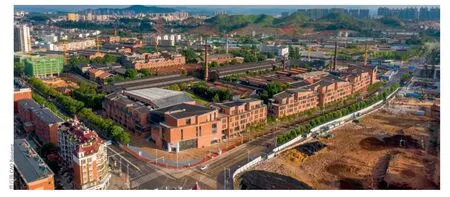
5 鸟瞰Aerial views
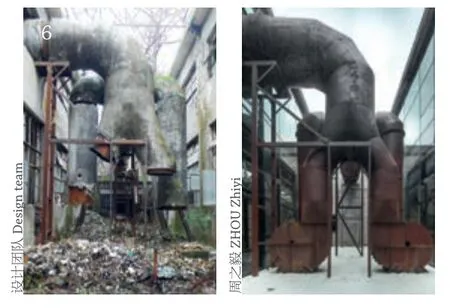
6 博物馆保留修缮的工业设施Restored industrial facilities in the museum
评委评语
项目遵循保护原真性、“最小干预”原则,以适度创新及低碳环保的理念进行工业遗产改造利用,对老厂房的外墙、构架予以最大限度保留,并采用原建造工艺进行修复和再利用。设计采用与原木屋架神似的钢结构,既满足了消防规范也传承了原有结构的视觉特点;将不同时期的圆窑、长窑、货车轨道等原工艺流程上的典型设备作为展陈要素进行流线组织。建筑外部空间与城市原有肌理实现了完美结合。该项目对城市更新做出了有益的尝试,堪称典范。
The implementation of the planning and design of the demonstration area of the Taoxichuan International Ceramic Culture Industrial Park in Jingdezhen began in 2012 and included the preservation of industrial buildings and some new buildings.Among them,the museum was transformed from an important factory building originally built in the 1950s.
The reopening of the district with workshops and service facilities attracted ceramic artists worldwide.With the continuity of ceramic culture and refreshed collective memories,Jingdezhen witnessed a booming tourism industry and restored its position as the centre of global ceramic art.Furthermore,the art district provided job opportunities and available public space for local citizens,alleviated social conflicts caused by the declining manufacturing industry,and promoted the overall upgrading of Jingdezhen.
(1) Following the principle of "minimal intervention",the project aimed at preserving the authenticity of the old plants through meticulous restoration and thoughtful renovation.The original structure and façade were maintained to the maximum and restored in original ways.Key production equipment from different periods,including the round kilns,liner kilns,and railway tracks,were retained and incorporated into the display streamline of the interior space.
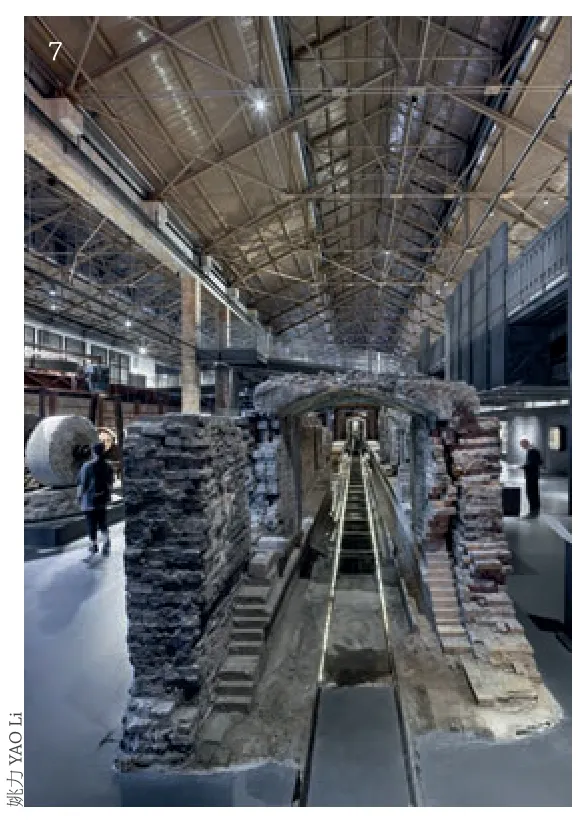
7 博物馆室内Interior view of the museum
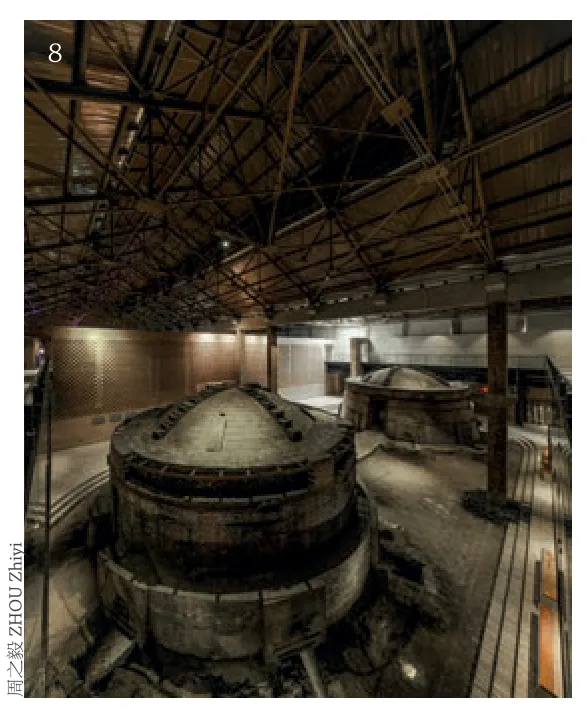
8 博物馆内部保留修缮的圆窑The restored round kiln inside the museum

9 博物馆总平面General plan of the museum
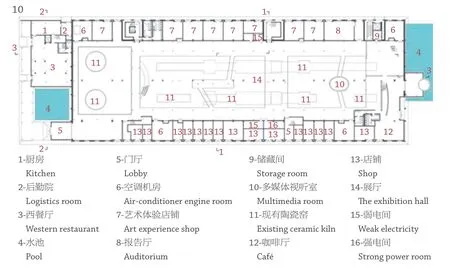
10 首层平面Ground floor plan

11 二层平面First floor plan

12 剖面Sections

13 立面Elevations

14 剖面Sections

15 立面Elevations
(2) Eco-friendly materials and removable structures were employed with the idea of sustainable development.Steel trusses replaced the rotten wood frames with a similar form,which retained the initial visual characteristic of the roof and was in compliance with modern fire codes.The extension part adopted a reversible structure form for future adaptation.Thermal insulation materials were introduced into the roof and the walls to meet the energy-saving codes.
(3) The interaction was strengthened between internal space,outdoor squares,and the urban environment.Small shop unities were designed along the first floor opening to the street.The old chimneys and trees were preserved,and the water landscape was introduced as essential outdoor elements.The district has become a lively venue for public activity among the local community.
(4) The application of DIBO (Design,Investment,Building,and Operation) integrated design procedure helped manage the upgrading of business types and spatial streamline,advancing the quality of implementation remarkably.
Jury Statement
The project follows the principles of preser ving authenticity and "minimal intervention",and transforms and utilises the industrial heritage guided by the concepts of moderate innovation and low-carbon environmental protection.It preserves the façade and the frame of the old factory building to the maximum extent,and adopts the original construction techniques for restoration and reuse.Moreover,the design uses a steel structuresimilar to the original wooden roof,which not only meets the fire control code but also inherits the visual characteristics of the original structure.The typical equipment of the original process such as the round kiln,long kiln,and truck track in different periods are used as the exhibition elements for the flow organisation.And the external space of the building is perfectly integrated with the existing texture of the city.It is safe to say that the project is a useful attempt for urban renewal and can be regarded as a model work.
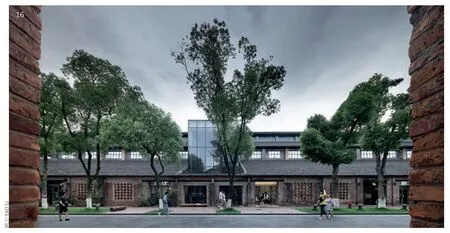
16 博物馆东立面East elevation of the museum
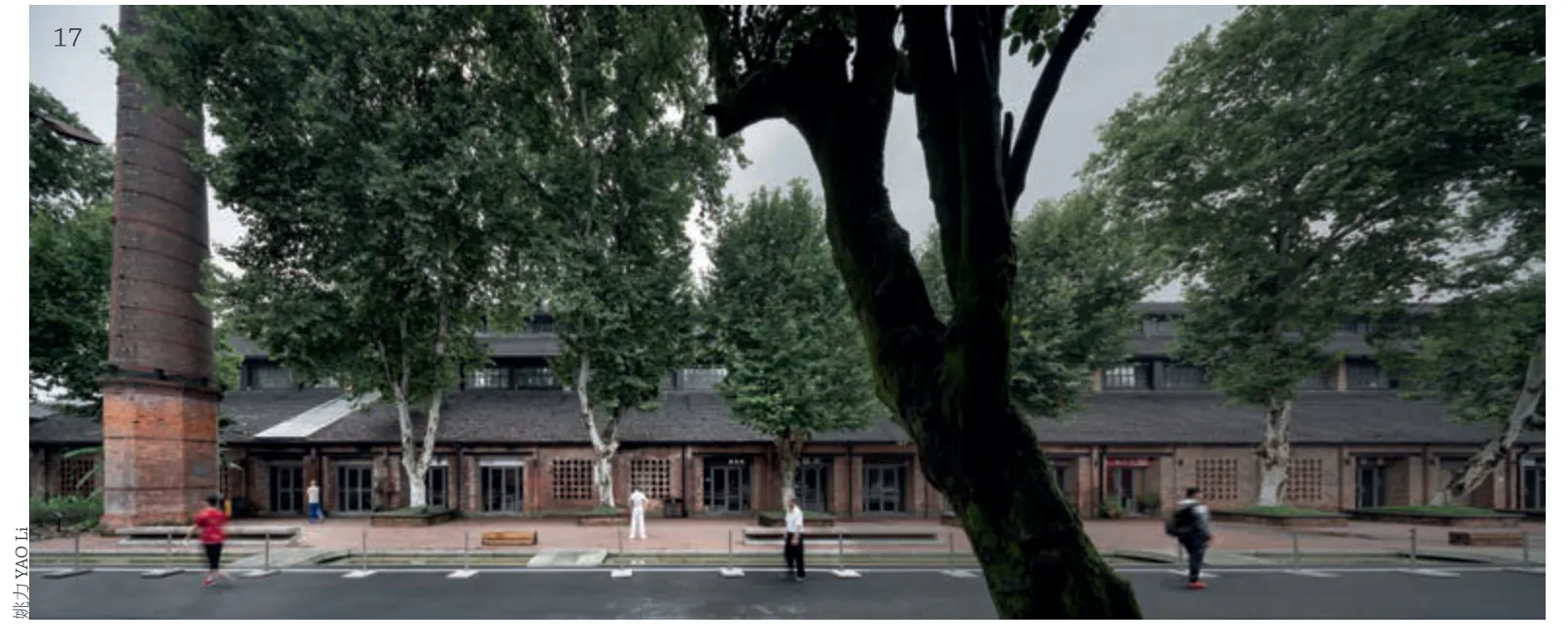
17 博物馆西立面West elevation of the museum

18 博物馆北侧集市Market on the north side of the museum

19 博物馆西侧集市Market on the west side of the museum
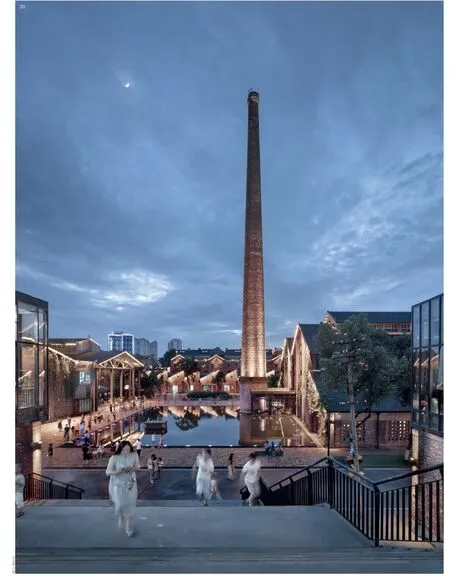
20 水景广场Waterside Plaza
——省景德镇老年大学校歌

